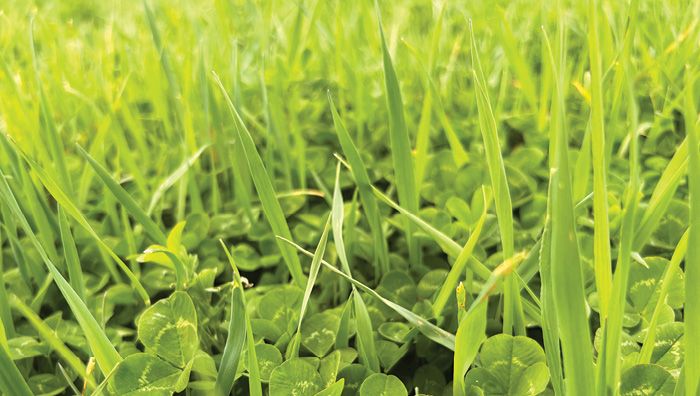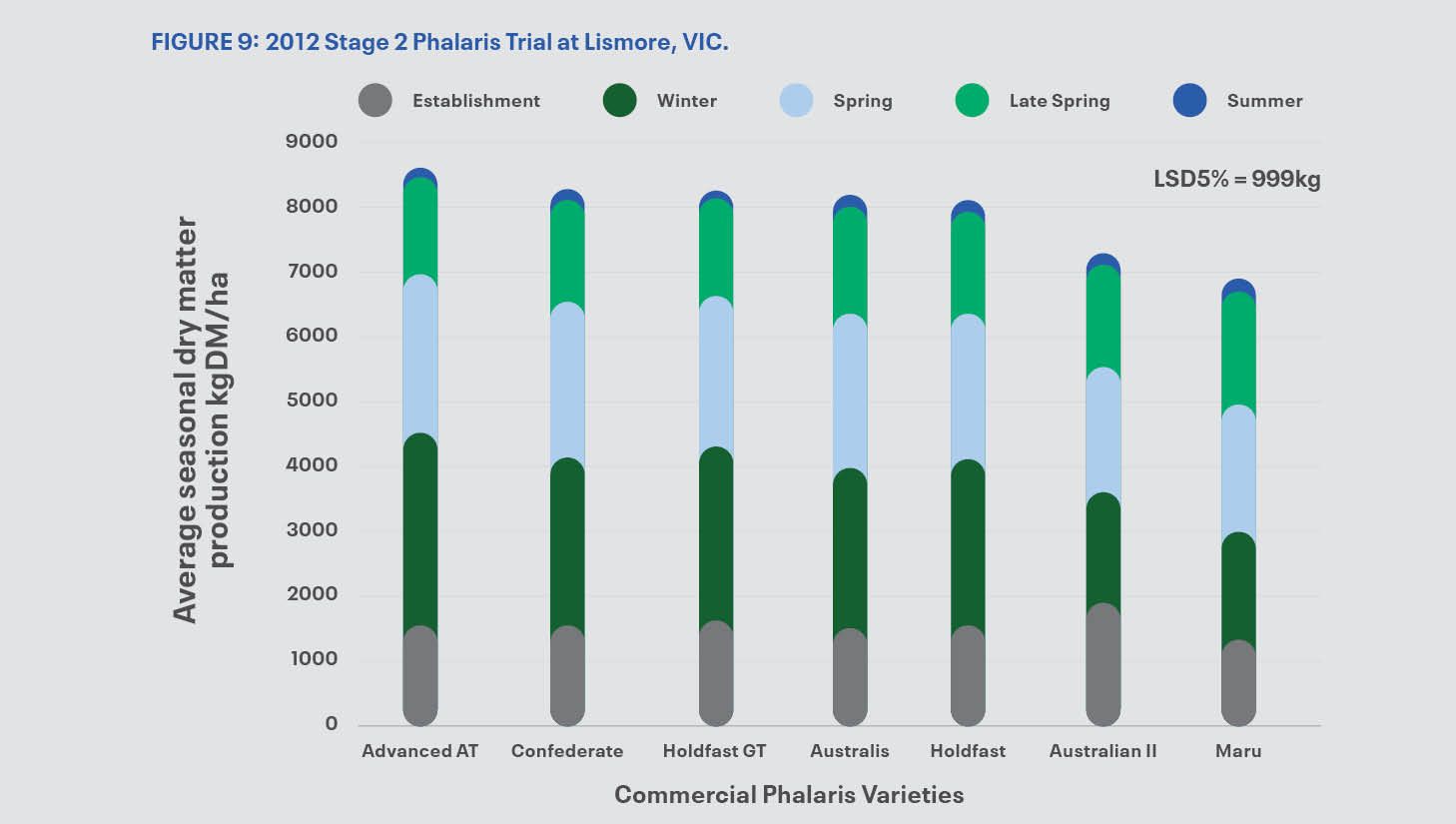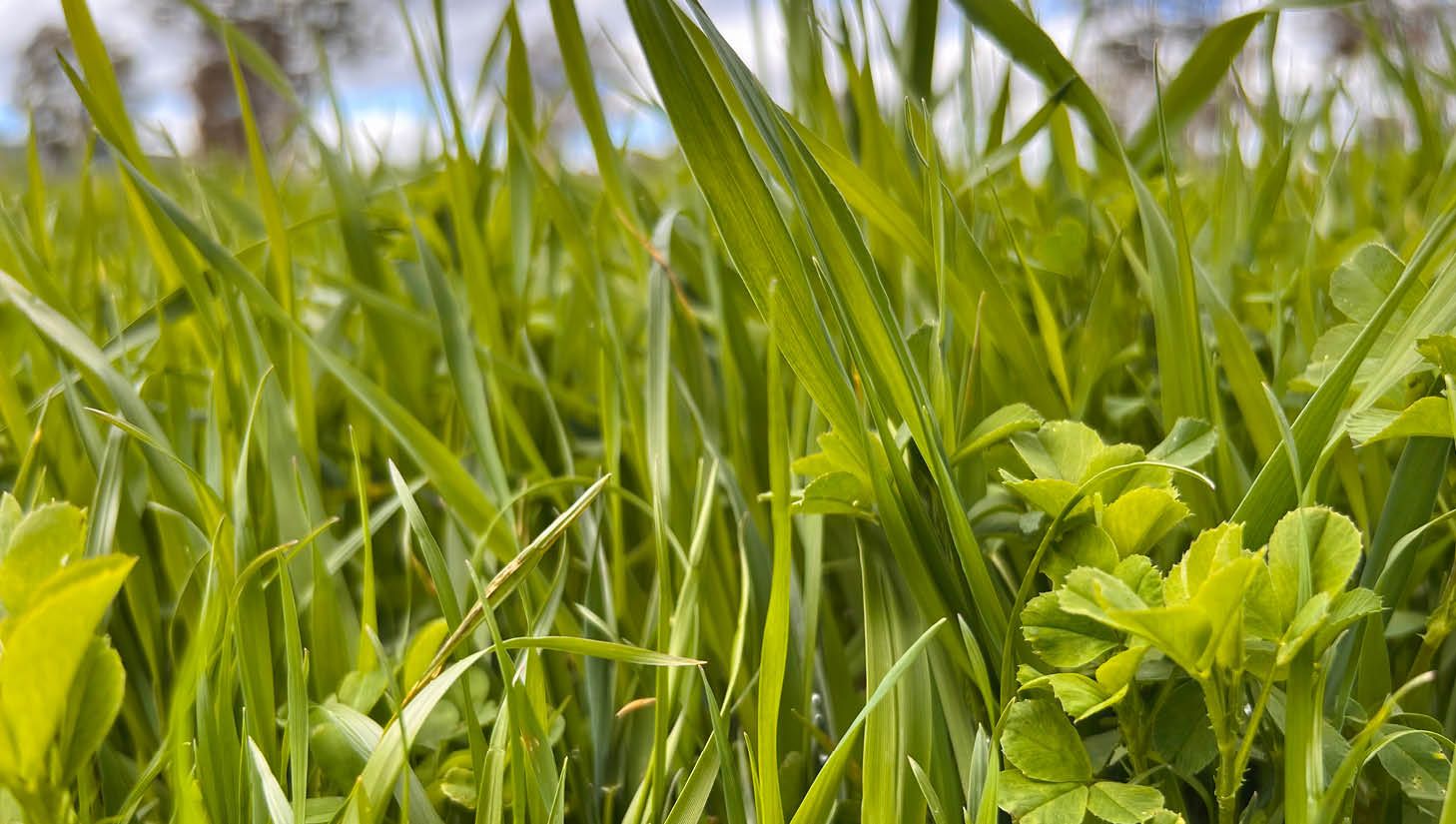Get in Touch
Contact Us
National team

Find Your Local Sales Agronomist
Confederate phalaris is a winter active phalaris that is best suited to 500mm+ rainfall and heavier soil types. It has a similar growth habit to Sirosa and Holdfast. The selection criteria was for strong winter activity combined with low alkaloid production and improved late season growth. Confederate prefers rotational grazing, but tolerates periods of set stocking.
Bred in Australia, Confederate phalaris has been trialled extensively at Ballarat (VIC), Lismore (VIC), Maryborough (VIC) and central/southern NSW alongside many of the commercially available phalaris varieties. It has proven itself as a strong performing, winter active variety with excellent seasonal dry matter production, good persistence and the benefit of low alkaloids levels.
Pasture seed sowing rate (sole): 1-4kg/ha
Pasture seed sowing rate (mixed): 1-3kg/ha


The above graph shows seasonal dry matter production of Confederate phalaris compared to other commercial Phalaris varieties available at the time. Sown at Lismore, south-west Victoria, in autumn 2012 with an average of 3 years production. The Lismore, Victoria area traditionally use Phalaris’ as a pasture base for many livestock production systems.
Phalaris doesn’t compete well against other species, especially weeds. Planning and preparing a paddock with the intention to sow down a phalaris based pasture is important. Established phalaris plants can compete well for moisture and nutrients if established correctly – leading to improved persistence.
When planning to sow a phalaris based pasture, it is important to know which weeds are present in the paddock and their life cycle. A Programmed Approach™ to Pasture Renewal is a great way to setup your paddock for a long term high performance permanent pasture.
Phalaris is best suited to heavier soil types with good levels of fertility, but can also be sown into lighter soils with good fertility. Phalaris is generally sensitive to acidic soils, so lime applications may be necessary to correct soil pH prior to sowing. Phalaris is a small seeded temperate species and is sensitive to sowing depth. If sown too deep, germination can be poor.
Key points to consider when sowing Confederate phalaris
For pasture seed sowing rates specific to your farming needs, contact your local DLF Seeds Sales Agronomist here

Grazing management is important in the first year, if done correctly it will set up a newly sown phalaris paddock for long term production and persistence. Careful consideration should be taken with grazing in the first year, the class of stock to graze with and the amount of time stock are allowed access to a first year paddock of phalaris. Avoid grazing with a heavy stock class especially in wet conditions.
Management should encourage the development of large robust seedlings by the end of spring. Large plants have deeper root systems, stronger tillers and develop larger crowns increasing the prospects for survival through the first summer (NSW DPI).
If sown early, Confederate can withstand pulling, the first grazing should be very quick and remove a small amount of dry matter. A light grazing will encourage tillering. In most situations it is recommended a phalaris shouldn’t be grazed in the establishment phase, especially if sown late and into cold soils.
Autumn
Before autumn break, reduce litter to enhance clover germination. Following break avoid grazing for 6-8 weeks but control covers to aid with clover germination. Winter – Rotationally graze, maintain good covers above 1000kgDM/ha. If set stocked maintain dry matter above 1200kgDM/ha.
Spring
Maintain paddocks below 3000kgDM/ha, this encourages clover seed set. Rest paddocks between stem elongation and flowering/seed set. Supplement cutting – Avoid cutting hay or silage in first 2 years. Delay cutting until after seed head emergence in tough environments. In softer environments recovery and seed head emergence can take place after cutting.
Summer
After seeding has occurred, standing dry feed should gradually be removed but maintaining ground cover is also important for erosion control. As a companion species, Confederate phalaris can be sown with legumes to improve feed quality and increase animal productivity.
Confederate is susceptible to common pasture pests such as blue oat mite and redlegged earth mite, so ensuring that the seed is Ultrastrike® treated at the time of sowing will give a good level of protection during the establishment period.
It is still critically important to monitor the emerging seedlings and if pest populations are starting to cause damage, then a foliar insecticide may be required to give an improved level of protection. Other pests that can cause damage to phalaris are slugs and snails, so be sure to use bait if you know that these could be a potential risk.
Field crickets have also been known to cause damage, especially when establishing phalaris in heavier soils that are prone to cracking over the hot summer months. Confederate has been selected for rust tolerance. Rust can affect feed quality in some environmental and seasonal conditions.
Article snapshot: Confederate phalaris pastures are still standing strong and continuing to impress local graziers almost a decade after their first test in the region by Agronomist Anthony Pearce.
Minimum 500mm rainfall per annum unless irrigated
